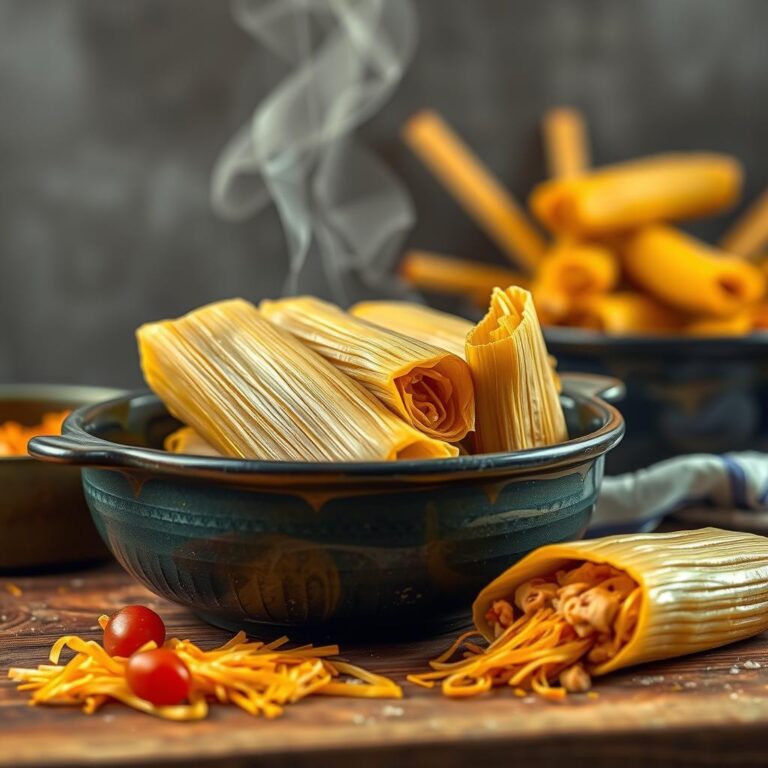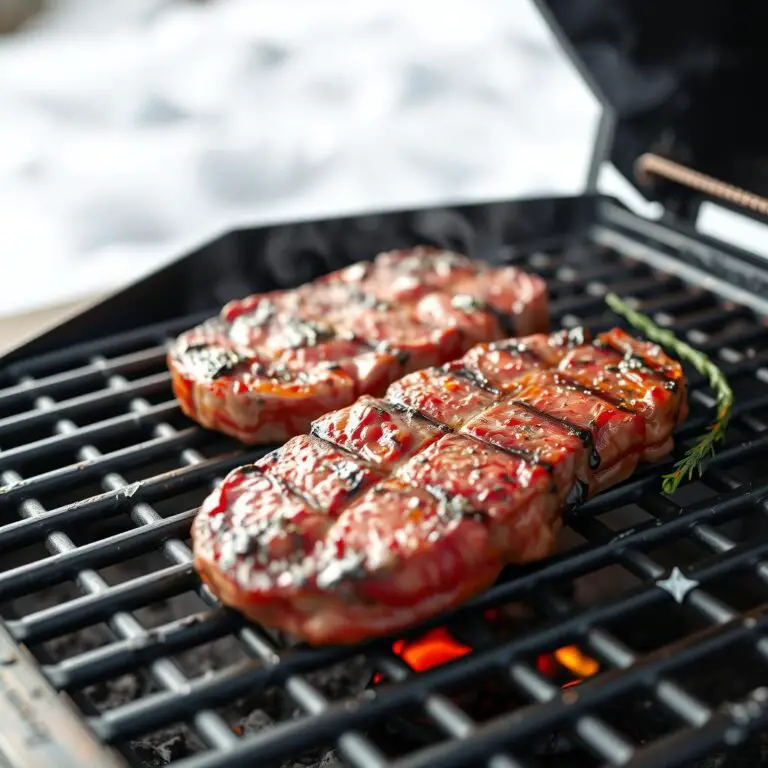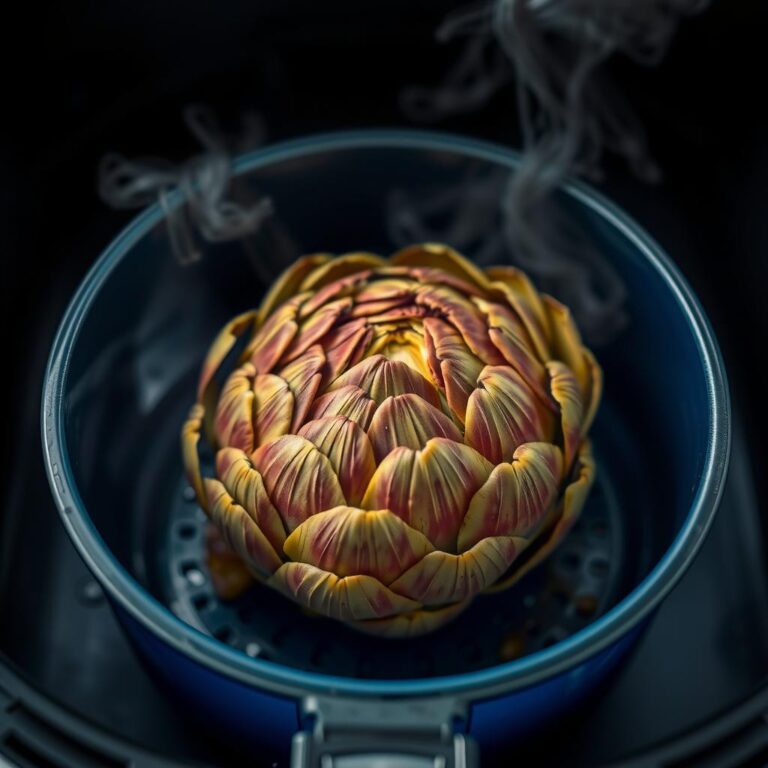Can you cook a turkey on the stovetop?
That's the question a lot of folks ask, especially when oven space is tight during Thanksgiving or if you're dealing with a smaller bird.
Let's dive straight into whether simmering, braising, or otherwise cooking a turkey on the stovetop is actually a feasible option.
Can You Really Cook a Turkey on the Stovetop?
Yes, you can cook a turkey on the stovetop.
It's not the traditional roasting method most of us are used to, but it's totally doable, especially if you're working with smaller turkey parts like breasts, thighs, or drumsticks.
The key here is to think about stovetop cooking as a braising or simmering process.
Think of it like this: You're essentially making a big pot of turkey stew, but with a little more finesse.
Why Consider Stovetop Turkey Cooking?
Okay, so why would anyone want to cook a turkey on the stovetop in the first place?
Here’s the lowdown:
- Oven Space Crunch: Thanksgiving is notorious for oven Tetris. If your oven is already occupied with pies, casseroles, and stuffing, the stovetop becomes a valuable alternative.
- Small Turkey Pieces: Cooking individual turkey parts on the stove is way easier and faster than roasting a whole bird.
- Faster Cooking Time: Stovetop cooking generally cuts down on cooking time, perfect for when you're in a hurry.
- Moisture Retention: Braising or simmering helps keep the turkey moist, preventing that dreaded dry turkey situation.
- Flavor Infusion: You can infuse the turkey with all sorts of delicious flavors by using broths, herbs, and spices in your cooking liquid.
What Turkey Parts Work Best on the Stovetop?
Not all turkey parts are created equal when it comes to stovetop cooking.
Here’s a quick guide:
- Turkey Breast: Sliced or cut into smaller pieces, turkey breast cooks beautifully on the stovetop.
- Turkey Thighs: These are super flavorful and stay moist during long simmering times.
- Turkey Drumsticks: Similar to thighs, drumsticks handle stovetop cooking like a champ.
- Turkey Wings: Great for adding flavor to your cooking liquid and can be eaten as a tasty snack.
- Ground Turkey: Ground turkey works fantastic on the stovetop, and you can use it to make taco meat or chili.
The Stovetop Turkey Cooking Method: A Step-by-Step Guide
Alright, let's get into the nitty-gritty of how to actually cook a turkey on the stovetop.
I’m going to walk you through the process, step by step, so you can nail it the first time.
1. Prep Your Turkey
First things first, you need to prep your turkey.
This involves a few key steps:
- Thawing: If your turkey is frozen, make sure it’s fully thawed in the refrigerator. This can take a few days, so plan ahead.
- Rinsing: Rinse the turkey pieces under cold water and pat them dry with paper towels. This helps remove any surface bacteria and ensures better browning.
- Seasoning: Season generously with salt, pepper, and any other herbs and spices you like. Consider using garlic powder, onion powder, paprika, or a poultry seasoning blend.
2. Sear the Turkey (Optional but Recommended)
Searing the turkey before braising adds a ton of flavor.
Here’s how to do it:
- Heat Oil: Heat a tablespoon or two of oil in a large, heavy-bottomed pot or Dutch oven over medium-high heat.
- Sear: Add the turkey pieces to the pot, making sure not to overcrowd it. Sear each piece for about 3-4 minutes per side, until nicely browned.
- Remove: Remove the turkey from the pot and set aside.
3. Build Your Flavor Base
This is where you create the delicious sauce that will simmer with the turkey.
- Sauté Aromatics: In the same pot, add chopped onions, celery, and carrots (mirepoix). Sauté until softened, about 5-7 minutes.
- Add Garlic and Herbs: Add minced garlic and fresh herbs like thyme, rosemary, or sage. Cook for another minute until fragrant.
- Deglaze the Pot: Pour in a cup of wine or broth to deglaze the pot, scraping up any browned bits from the bottom. This adds a lot of flavor.
4. Simmer the Turkey
Now it’s time to bring everything together and let the magic happen.
- Return Turkey to Pot: Place the seared turkey pieces back into the pot on top of the vegetables.
- Add Liquid: Pour in enough chicken broth or turkey stock to almost cover the turkey. You want the liquid to come about ¾ of the way up the sides of the turkey.
- Bring to a Simmer: Bring the liquid to a simmer, then reduce the heat to low, cover the pot, and let it simmer gently.
5. Cook Until Tender
The cooking time will vary depending on the size of the turkey pieces.
- Check for Doneness: Cook until the turkey is very tender and easily pulls apart with a fork. This usually takes about 1.5 to 2 hours for smaller pieces like breasts or thighs, and up to 2.5 to 3 hours for larger drumsticks.
- Use a Thermometer: The internal temperature should reach 165°F (74°C).
6. Finish and Serve
Once the turkey is cooked, it’s time to finish it off and serve.
- Remove Turkey: Remove the turkey pieces from the pot and set aside.
- Thicken Sauce (Optional): If you want a thicker sauce, you can simmer the remaining liquid in the pot over medium-high heat until it reduces to your desired consistency. You can also whisk in a cornstarch slurry (1 tablespoon cornstarch mixed with 2 tablespoons cold water) to thicken it.
- Serve: Serve the turkey with the sauce spooned over it.
Tips for the Perfect Stovetop Turkey
Here are a few extra tips to ensure your stovetop turkey turns out amazing:
- Use a Heavy-Bottomed Pot: This helps distribute heat evenly and prevent scorching.
- Don't Overcrowd the Pot: Cook the turkey in batches if necessary to ensure proper browning.
- Adjust Liquid as Needed: Check the liquid level periodically and add more broth or water if it’s evaporating too quickly.
- Baste Occasionally: Basting the turkey with the cooking liquid every 30 minutes or so helps keep it moist.
- Let it Rest: Let the cooked turkey rest for about 10-15 minutes before serving to allow the juices to redistribute.
Cooking turkey on the stovetop is a fantastic alternative to roasting, especially when oven space is at a premium or you're working with smaller turkey parts.
Can you cook a turkey on the stovetop? That's the question a lot of folks ask, especially when oven space is tight during Thanksgiving or if you're dealing with a smaller bird.
Let's dive straight into whether simmering, braising, or otherwise cooking a turkey on the stovetop is actually a feasible option.
Can You Really Cook a Turkey on the Stovetop?
Yes, you can cook a turkey on the stovetop.
It's not the traditional roasting method most of us are used to, but it's totally doable, especially if you're working with smaller turkey parts like breasts, thighs, or drumsticks.
The key here is to think about stovetop cooking as a braising or simmering process.
Think of it like this: You're essentially making a big pot of turkey stew, but with a little more finesse.
Why Consider Stovetop Turkey Cooking?
Okay, so why would anyone want to cook a turkey on the stovetop in the first place?
Here’s the lowdown:
- Oven Space Crunch: Thanksgiving is notorious for oven Tetris. If your oven is already occupied with pies, casseroles, and stuffing, the stovetop becomes a valuable alternative.
- Small Turkey Pieces: Cooking individual turkey parts on the stove is way easier and faster than roasting a whole bird.
- Faster Cooking Time: Stovetop cooking generally cuts down on cooking time, perfect for when you're in a hurry.
- Moisture Retention: Braising or simmering helps keep the turkey moist, preventing that dreaded dry turkey situation.
- Flavor Infusion: You can infuse the turkey with all sorts of delicious flavors by using broths, herbs, and spices in your cooking liquid.
What Turkey Parts Work Best on the Stovetop?
Not all turkey parts are created equal when it comes to stovetop cooking.
Here’s a quick guide:
- Turkey Breast: Sliced or cut into smaller pieces, turkey breast cooks beautifully on the stovetop.
- Turkey Thighs: These are super flavorful and stay moist during long simmering times.
- Turkey Drumsticks: Similar to thighs, drumsticks handle stovetop cooking like a champ.
- Turkey Wings: Great for adding flavor to your cooking liquid and can be eaten as a tasty snack.
- Ground Turkey: Ground turkey works fantastic on the stovetop, and you can use it to make taco meat or chili.
The Stovetop Turkey Cooking Method: A Step-by-Step Guide
Alright, let's get into the nitty-gritty of how to actually cook a turkey on the stovetop.
I’m going to walk you through the process, step by step, so you can nail it the first time.
1. Prep Your Turkey
First things first, you need to prep your turkey.
This involves a few key steps:
- Thawing: If your turkey is frozen, make sure it’s fully thawed in the refrigerator. This can take a few days, so plan ahead.
- Rinsing: Rinse the turkey pieces under cold water and pat them dry with paper towels. This helps remove any surface bacteria and ensures better browning.
- Seasoning: Season generously with salt, pepper, and any other herbs and spices you like. Consider using garlic powder, onion powder, paprika, or a poultry seasoning blend.
2. Sear the Turkey (Optional but Recommended)
Searing the turkey before braising adds a ton of flavor.
Here’s how to do it:
- Heat Oil: Heat a tablespoon or two of oil in a large, heavy-bottomed pot or Dutch oven over medium-high heat.
- Sear: Add the turkey pieces to the pot, making sure not to overcrowd it. Sear each piece for about 3-4 minutes per side, until nicely browned.
- Remove: Remove the turkey from the pot and set aside.
3. Build Your Flavor Base
This is where you create the delicious sauce that will simmer with the turkey.
- Sauté Aromatics: In the same pot, add chopped onions, celery, and carrots (mirepoix). Sauté until softened, about 5-7 minutes.
- Add Garlic and Herbs: Add minced garlic and fresh herbs like thyme, rosemary, or sage. Cook for another minute until fragrant.
- Deglaze the Pot: Pour in a cup of wine or broth to deglaze the pot, scraping up any browned bits from the bottom. This adds a lot of flavor.
4. Simmer the Turkey
Now it’s time to bring everything together and let the magic happen.
- Return Turkey to Pot: Place the seared turkey pieces back into the pot on top of the vegetables.
- Add Liquid: Pour in enough chicken broth or turkey stock to almost cover the turkey. You want the liquid to come about ¾ of the way up the sides of the turkey.
- Bring to a Simmer: Bring the liquid to a simmer, then reduce the heat to low, cover the pot, and let it simmer gently.
5. Cook Until Tender
The cooking time will vary depending on the size of the turkey pieces.
- Check for Doneness: Cook until the turkey is very tender and easily pulls apart with a fork. This usually takes about 1.5 to 2 hours for smaller pieces like breasts or thighs, and up to 2.5 to 3 hours for larger drumsticks.
- Use a Thermometer: The internal temperature should reach 165°F (74°C).
6. Finish and Serve
Once the turkey is cooked, it’s time to finish it off and serve.
- Remove Turkey: Remove the turkey pieces from the pot and set aside.
- Thicken Sauce (Optional): If you want a thicker sauce, you can simmer the remaining liquid in the pot over medium-high heat until it reduces to your desired consistency. You can also whisk in a cornstarch slurry (1 tablespoon cornstarch mixed with 2 tablespoons cold water) to thicken it.
- Serve: Serve the turkey with the sauce spooned over it.
Tips for the Perfect Stovetop Turkey
Here are a few extra tips to ensure your stovetop turkey turns out amazing:
- Use a Heavy-Bottomed Pot: This helps distribute heat evenly and prevent scorching.
- Don't Overcrowd the Pot: Cook the turkey in batches if necessary to ensure proper browning.
- Adjust Liquid as Needed: Check the liquid level periodically and add more broth or water if it’s evaporating too quickly.
- Baste Occasionally: Basting the turkey with the cooking liquid every 30 minutes or so helps keep it moist.
- Let it Rest: Let the cooked turkey rest for about 10-15 minutes before serving to allow the juices to redistribute.
Cooking turkey on the stovetop is a fantastic alternative to roasting, especially when oven space is at a premium or you're working with smaller turkey parts.
Troubleshooting Your Stovetop Turkey
What if things don't go exactly as planned when you cook turkey on the stovetop?
Let's tackle some common issues.
Problem: Turkey is Cooking Too Quickly
Solution: Reduce the heat immediately.
You want a gentle simmer, not a rapid boil, so turn the burner down to low or even medium-low, this ensures you still cook that turkey properly on the stovetop.
Problem: Turkey is Drying Out
Solution: Add more liquid.
Your broth is probably evaporating too quickly so pour in some more chicken or turkey stock to keep things moist, this helps maintain the quality of cooking turkey on the stovetop.
Problem: The Sauce is Too Thin
Solution: Remove the turkey and reduce the sauce.
Crank up the heat to medium-high and let the sauce simmer until it thickens up, or use a cornstarch slurry as mentioned earlier, this is a technique to improving the experience of cooking turkey on the stovetop.
Problem: Turkey Isn't Browning Enough
Solution: Sear it longer initially.
Make sure your pan is hot and the turkey is dry before searing, getting a good sear at the start will improve the overall look and flavor, crucial when cooking turkey on the stovetop.
Problem: Uneven Cooking
Solution: Rotate the turkey pieces.
Flip the turkey pieces occasionally to ensure they cook evenly on all sides, especially important for thicker cuts, leading to a more balanced experience of cooking turkey on the stovetop.
Flavor Variations for Your Stovetop Turkey
Want to mix things up and add some unique flavors to your stovetop turkey?
Here are a few ideas:
-
Mediterranean Turkey: Add olives, sun-dried tomatoes, feta cheese, and oregano to your cooking liquid.
This gives it a bright, fresh flavor.
-
Spicy Turkey: Include some chili flakes, diced jalapeños, or a dash of hot sauce for a kick.
Make sure you handle the spice level to your liking.
-
Lemon Herb Turkey: Use lemon slices, thyme, rosemary, and garlic for a zesty, aromatic flavor.
This combination is refreshing and complements the turkey perfectly.
-
Mushroom Marsala Turkey: Sauté sliced mushrooms with Marsala wine and add them to the pot.
This gives a rich, earthy flavor that's perfect for fall.
-
Apple Cider Turkey: Use apple cider instead of broth for a slightly sweet and tangy flavor.
Add some cinnamon sticks and cloves for extra warmth.
These variations really add depth to cooking turkey on the stovetop.
Stovetop Turkey vs. Oven-Roasted Turkey
Let's compare cooking turkey on the stovetop with the traditional oven-roasting method.
Stovetop Turkey
- Pros:
- Faster cooking time
- Moister meat
- Frees up oven space
- Easier to infuse flavors
- Cons:
- Not ideal for whole turkeys
- Requires more attention
- Doesn't get crispy skin
Oven-Roasted Turkey
- Pros:
- Traditional method
- Crispy skin
- Good for whole turkeys
- Cons:
- Longer cooking time
- Can be dry
- Takes up oven space
Ultimately, the best method depends on your preferences and circumstances, but it's great to know you can cook turkey on the stovetop.
What to Serve with Your Stovetop Turkey
Now that you've nailed your stovetop turkey, what should you serve with it?
Here are a few classic and creative side dishes:
-
Mashed Potatoes: Creamy, buttery mashed potatoes are a must-have.
-
Stuffing: Whether it's cornbread or sourdough, stuffing is a Thanksgiving staple.
-
Cranberry Sauce: Tart and sweet cranberry sauce balances out the richness of the turkey.
-
Green Bean Casserole: A classic side dish with creamy mushroom sauce and crispy fried onions.
-
Roasted Vegetables: Roasted Brussels sprouts, carrots, or sweet potatoes add a healthy touch.
-
Gravy: Don't forget the gravy! Use the pan drippings from your stovetop turkey for an extra flavorful gravy.
These all complement the flavors achieved from cooking turkey on the stovetop.
Storing and Reheating Leftover Stovetop Turkey
Got leftovers?
Here's how to store and reheat your stovetop turkey:
-
Storing: Let the turkey cool completely, then store it in an airtight container in the refrigerator for up to 3-4 days.
-
Reheating: You can reheat the turkey in the microwave, oven, or on the stovetop.
For the stovetop, add a little broth to keep it moist and heat gently over low heat.
Is Cooking Turkey on the Stovetop Safe?
Safety is key, always.
-
Temperature: Ensure your turkey reaches an internal temperature of 165°F (74°C) to kill any harmful bacteria.
-
Proper Thawing: Always thaw your turkey completely in the refrigerator before cooking.
-
Cleanliness: Keep your cooking surfaces clean to prevent cross-contamination.
FAQ:
Can I cook a whole turkey on the stovetop?
Technically, you could if you had a pot big enough, but it's not recommended.
It's much easier and safer to cook smaller turkey parts on the stovetop.
How do I know when the turkey is done?
Use a meat thermometer to check the internal temperature.
It should reach 165°F (74°C).
Can I use frozen turkey on the stovetop?
No, always thaw your turkey completely before cooking.
What kind of pot should I use?
A large, heavy-bottomed pot or Dutch oven works best.
Can I make gravy with the pan drippings?
Absolutely! The pan drippings from stovetop turkey are perfect for making a flavorful gravy.
Conclusion
So, can you cook a turkey on the stovetop?
Absolutely.
It's a great alternative to roasting, especially when you're short on oven space or cooking smaller turkey parts.
With the right techniques and a little creativity, you can create a delicious and moist turkey dish that everyone will love and with a few simple steps, you can cook a turkey on the stovetop.





